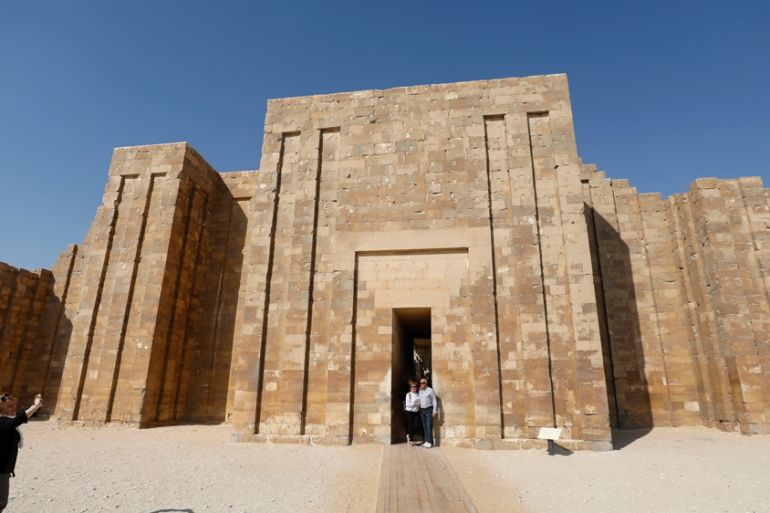Egypt reopens its oldest pyramid after 14-year restoration
The pyramid, a UNESCO World Heritage Site, was constructed 4,700 years ago during the era of Pharaoh Djoser.

Egypt on Thursday reopened the Pyramid of Djoser, the first pyramid ever built, after a 14-year restoration costing nearly $6.6m.
The pyramid, a World Heritage Site recognised by the United Nations Educational, Scientific and Cultural Organization (UNESCO), was constructed 4,700 years ago during the era of Pharaoh Djoser, one of ancient Egypt’s Third Dynasty kings.
Keep reading
list of 3 itemsEgypt uncovers tomb containing 50 mummies
Mummified mice found in recently-discovered Egyptian tomb
After the pyramid faced decades of neglect and the risk of collapse, the Egyptian government started an ambitious project to restore the structure, also known as the Step Pyramid, to splendour in 2006.
|
|
“We completed the restoration … of the first and oldest pyramid in Egypt, that of King Djoser, the founder of the Old Kingdom,” Antiquities and Tourism Minister Khaled El-Enany said on Thursday at the site.
It is “the first building in the world made entirely of stone”, El-Enany added.
The structure was designed by Imhotep, described by some as the world’s first architect.
“We are in awe as to how he was able to create this structure, which has remained standing for 4,700 years,” said El-Enany.
Restoration work stopped in 2011 after Egypt‘s popular uprising that toppled longtime president Hosni Mubarak, but resumed at the end of 2013.
Djoser’s Step Pyramid, the first large-scale stone construction in history and the largest pyramidal funerary complex, is located at Saqqara archaeological site, west of Cairo.
The 60-metre-high pyramid consists of six stacked steps over a burial shaft tomb that is 28 metres deep and seven metres wide.
‘Build a new Egypt’
Thursday’s reopening was attended by Egyptian Prime Minister Mostafa Madbouli as well as foreign ambassadors.
“We are working hard to build a new Egypt … and the restoration of our heritage is at the top of our priorities,”Madbouli said.
The project saw efforts to prevent the pyramid from collapsing, and external and internal restoration work, including of the paths leading to the pyramid and the internal corridors leading to the burial chamber.
Experts also restored the sarcophagus of King Djoser within the pyramid and the walls of the burial shaft tomb.
Egypt has touted a flurry of archaeological finds in recent years, in the hope of boosting its vital tourism sector, which has suffered multiple shocks since the 2011 uprising.
Last year, authorities unveiled a 4,500-year-old burial ground near the Giza pyramids replete with colourful wooden coffins and limestone statues.